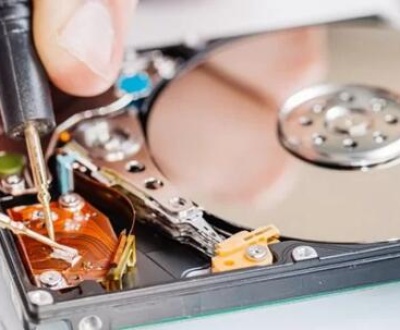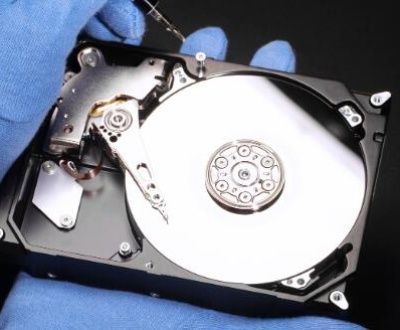External hard drives are invaluable tools for data storage, backup, and transfer. However, users may occasionally face the frustrating issue of files disappearing without warning.
Understanding the Issue: Why Do Files Disappear?
Before diving into recovery methods, it’s essential to understand the various reasons files may go missing from an external hard drive. Some common causes include:
Accidental Deletion: Unintentional file deletions by users.
File System Corruption: Damage to the file system can lead to inaccessible files.
Drive Errors: Bad sectors or hardware malfunctions can cause files to disappear.
Virus or Malware Attacks: Malicious software can delete or hide files.
Improper Ejection: Removing the drive without safely ejecting can lead to data loss.
Hidden Files: Files may not be deleted but simply hidden due to settings or errors.
Understanding these causes will help you diagnose the situation effectively.

Step-by-Step Recovery Guide
Step 1: Check for Hidden Files
Sometimes, files aren’t actually deleted but simply hidden from view.
For Windows Users:
Open File Explorer: Navigate to your external hard drive.
View Tab: Click on the “View” tab at the top.
Show Hidden Files: Check the box for “Hidden items” to see if your files reappear.
For Mac Users:
Open Finder: Navigate to your external drive.
Show Hidden Files: Press Command + Shift + . (dot) to toggle hidden files.
Step 2: Search for Recently Deleted Files
If files have been deleted, they might still be recoverable from the Recycle Bin or Trash.
For Windows Users:
Open Recycle Bin: Check if your files are present there.
Restore Files: Right-click on the files you want to recover and select “Restore.”
For Mac Users:
Open Trash: Look for your deleted files.
Recover Files: Right-click and select “Put Back” to restore.
Step 3: Run Disk Error Checking (Windows)
Running a disk check can identify and potentially fix file system errors.
Open This PC: Right-click on your external hard drive.
Properties: Select “Properties” and go to the “Tools” tab.
Error Checking: Click “Check” under the Error Checking section and follow the prompts to scan and fix errors.
Step 4: Use Disk Utility (Mac)
Mac users can utilize Disk Utility to repair file system issues.
Open Disk Utility: Go to Applications > Utilities > Disk Utility.
Select Your Drive: Click on your external hard drive from the list.
First Aid: Click “First Aid” and then “Run” to check for and repair any errors.
Step 5: Recover Lost Files Using Data Recovery Software
Panda Assistant is a cutting-edge data recovery software that empowers users to recover lost or deleted files effortlessly from various storage devices, including external hard drives, SD cards, and USB drives. With its user-friendly interface, Panda Assistant is designed for everyone, from tech novices to seasoned professionals.
One of its key features is its robust scanning capabilities, which utilize advanced algorithms to locate and restore files lost due to accidental deletion, formatting, or corruption. Supporting a wide array of file formats, Panda Assistant ensures users can recover essential documents, cherished photos, videos, and more.
Security and privacy are top priorities for Panda Assistant. The software provides a safe recovery environment and includes a preview function, allowing users to view files before recovery, ensuring they retrieve exactly what they need. Regular updates keep the software aligned with the latest data recovery technologies, enhancing its efficiency and effectiveness.
Panda Assistant also offers helpful customer support and extensive documentation, making the recovery process straightforward. Whether you’re facing a simple case of lost files or more complicated data loss situations, Panda Assistant stands out as a reliable solution. With its powerful features and commitment to user satisfaction, you can trust Panda Assistant to help you regain your valuable data with ease and confidence. Experience the ultimate in data recovery with Panda Assistant and ensure your important files are always within reach.
Step 6: Check for Virus or Malware Infections
Malware can cause files to disappear or become inaccessible.
Run a Full System Scan: Use trusted antivirus software to scan both your external hard drive and the computer for malware.
Remove Threats: Follow the software’s instructions to remove any identified threats.
Step 7: Consult Professional Data Recovery Services
If you’re unable to recover your files using the above methods, consider seeking professional help.
When to Consider This: If your drive is making unusual noises or if data recovery attempts have failed, professional services can provide specialized tools and expertise.
Choose Reputable Services: Research and select a reputable data recovery company, as these services can be expensive.
Preventive Measures: Keeping Your Data Safe
To minimize the risk of files disappearing in the future, consider implementing these preventive measures:
1. Regular Backups
Create Regular Backups: Use automated backup solutions or manual methods to regularly back up important data to another drive or cloud service.
2. Safely Eject Drives
Always Safely Eject: Use the “Safely Remove Hardware” option before unplugging your external hard drive to avoid data corruption.
3. Use Reliable Security Software
Install Antivirus Software: Protect your system and external drives from malware by using reputable antivirus software.
4. Monitor Drive Health
Check Drive Health Regularly: Use tools like CrystalDiskInfo (Windows) or DriveDx (Mac) to monitor the health of your external hard drive.
5. Organize Files Properly
Maintain Organized File Structures: Keeping files well-organized can help locate lost files more easily and avoid accidental deletions.
Experiencing lost files on an external hard drive can be a distressing situation, but many recovery options are available. By understanding the causes of file disappearance and following the steps outlined in this guide, you can effectively troubleshoot and recover your data. Additionally, implementing preventive measures will help ensure the safety of your files in the future. Always remember to back up your data regularly to minimize the impact of potential data loss.
About us and this blog
Panda Assistant is built on the latest data recovery algorithms, ensuring that no file is too damaged, too lost, or too corrupted to be recovered.
Request a free quote
We believe that data recovery shouldn’t be a daunting task. That’s why we’ve designed Panda Assistant to be as easy to use as it is powerful. With a few clicks, you can initiate a scan, preview recoverable files, and restore your data all within a matter of minutes.
Subscribe to our newsletter!
More from our blog
See all postsRecent Posts
- Data recovery salt lake city utah 2025-04-18
- Data recovery sacramento 2025-04-18
- Data recovery miami 2025-04-18

 Try lt Free
Try lt Free Recovery success rate of up to
Recovery success rate of up to









